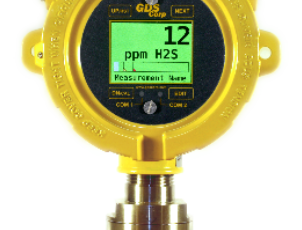Whether it’s in an oil or gas facility or manufacturing plant, workers face the danger of being exposed to hydrogen sulfide gas. Smelling like rotten eggs, it’s a colorless gas that is highly flammable and poses enormous risks on the job. Because of this, a hydrogen sulfide sensor is an essential part of workplace safety. However, while a needed part of workplace safety, there are numerous factors that come into play when using an H2S sensor.
Installation Procedures
As with any workplace equipment, it’s vital that an H2S gas sensor be properly installed. In many situations, an H2S microsensor is installed in confined spaces to alert workers to potentially dangerous situations. Since workers in these areas often have little warning when dangerous situations arise, an H2S gas detector can allow workers the time they will need to evacuate an area before a fire or explosion occurs.
Real-Time Monitoring
To detect hydrogen sulfide gas, detectors must be able to monitor gas levels in real-time and send the data to supervisory and safety personnel who are located at the workplace and at monitoring locations miles away. By doing so, engineers can carefully monitor the ambient air and process gas stream, enabling them to remotely calibrate the sensors if needed to maintain accurate and reliable data transmission.
Increased Property Damage
If a facility begins to notice increasing problems with damage to equipment and other areas of the workplace, there may be a chance hydrogen sulfide is to blame. Because it has a very adverse reaction to heat, structures and equipment can begin to corrode, which can eventually bring some operations to a halt as well as put workers at increased risk for injury. When these problems are noticed, it’s a good idea to install sensors that can measure the gas levels to determine the seriousness of the situation. However, be sure to do so at the first signs of these problems, since failing to do so could result in fires or explosions.
Portable Detectors
As the dangers from hydrogen sulfide have become more well-known in recent years, more and more companies are equipping workers with portable detectors that can be used in all work areas. However, an important point to remember is that since these detectors move from one type of environment to another, they may need to be calibrated more frequently to ensure their readings are accurate and reliable. To stay as safe as possible, safety personnel should follow OSHA guidelines for gas detector calibration, with a bump test performed daily and a calibration test performed once monthly at a minimum.
Contact GDS Corporation
Due to hydrogen sulfide being such a dangerous part of industrial workplaces, it’s crucial to have the proper detectors in place as soon as possible. To ensure your workplace has what it needs, contact GDS Corporation and speak with an experienced and knowledgeable applications engineer. By explaining your workplace and its needs, you’re sure to get the detection equipment that will keep workers and equipment safe from harm.

